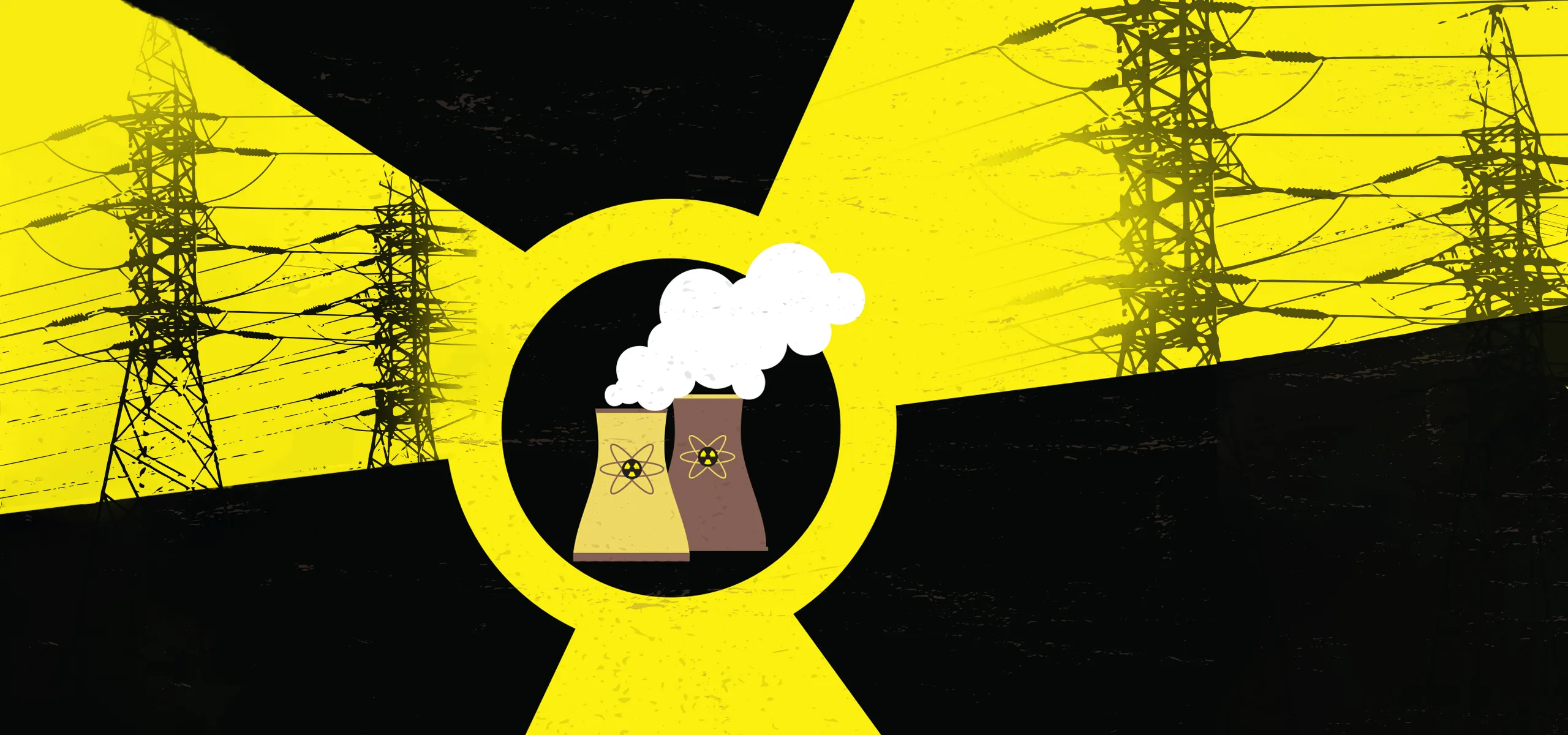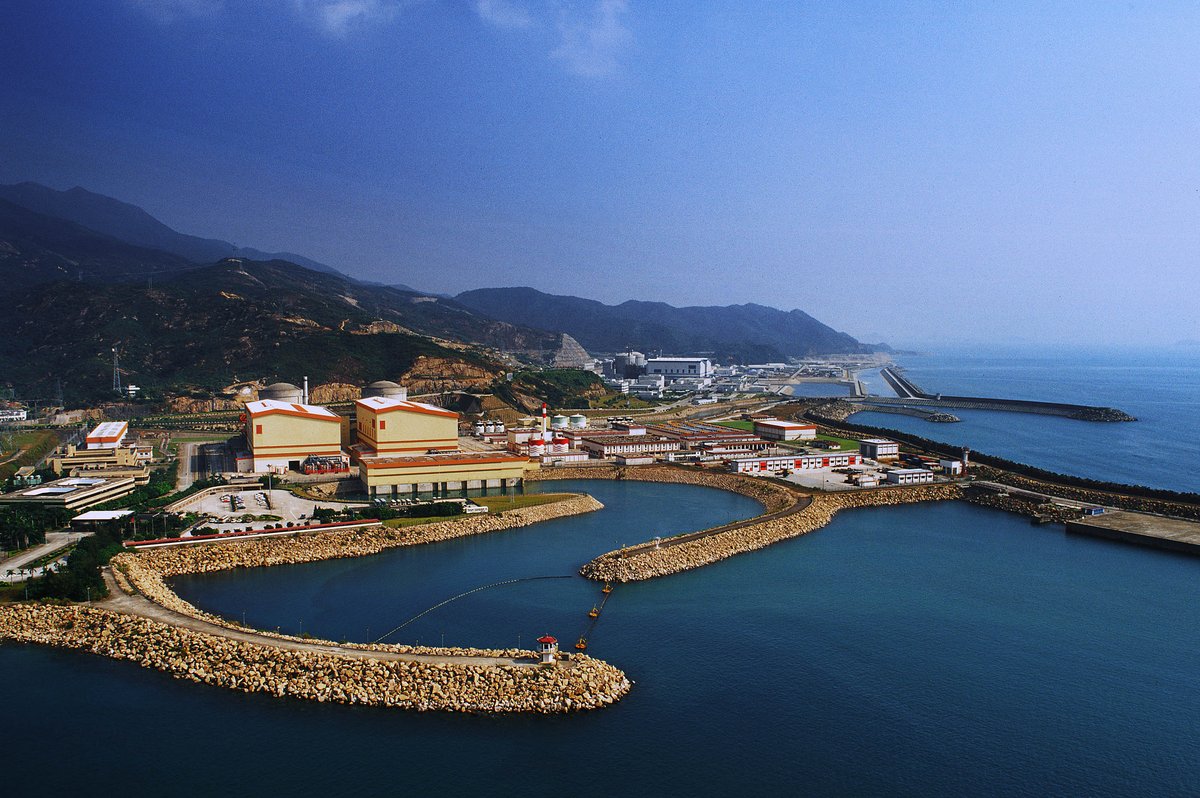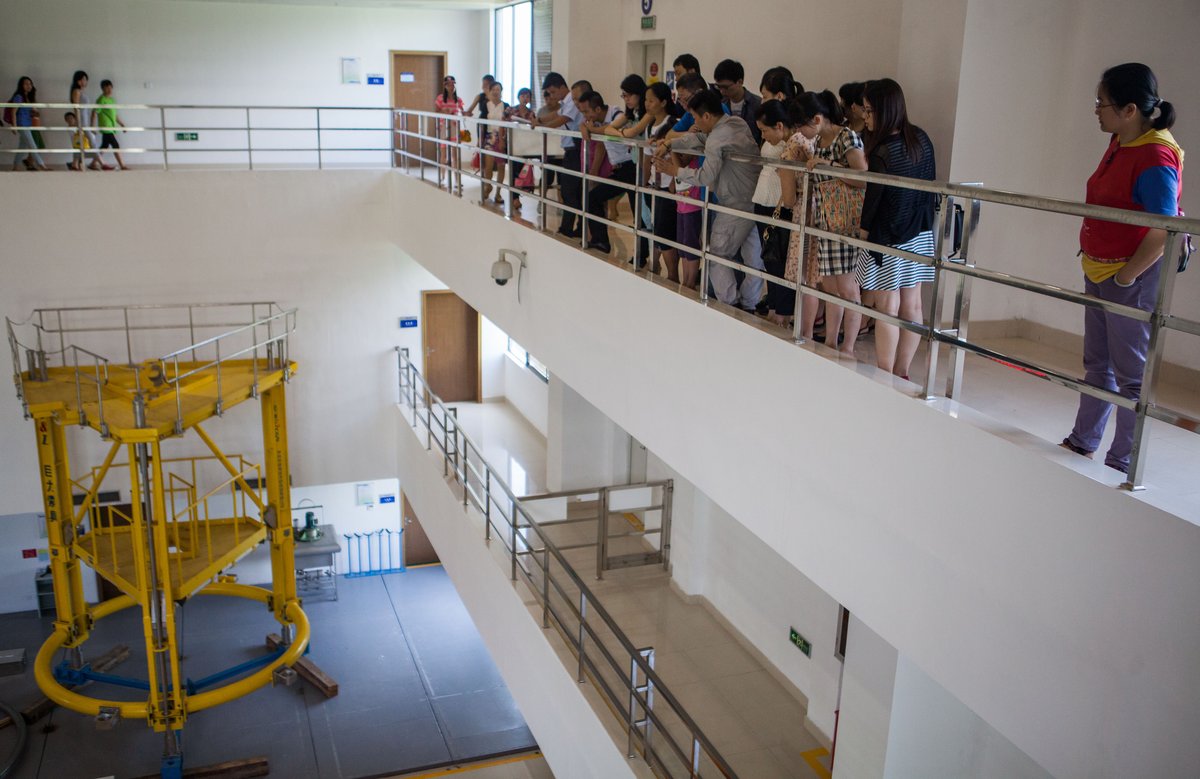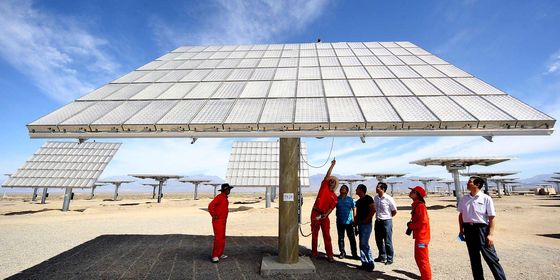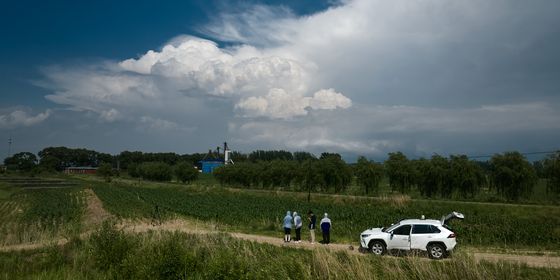As a solution to air pollution and climate change, nuclear power is attractive to Chinese authorities—but what about the public?
Yangliushan, Zhejiang Province, is a small town of around 2,000 residents. There isn’t anything particularly significant about it save for the fact it is the site of China’s first locally-constructed nuclear facility, Qinshan, which consists of multiple reactors built over many years—and the residents terrified of a cancer cluster in the area.
The first Qinshan reactor was put into operation in 1991, and the second Qinshan in 2001. A little over a decade later, a state media article cited a local doctor who pointed out that, according to official figures, the cancer rate in the nearby village was 1 percent, far higher than the 0.285 percent national average. He also suspected that if the figures had taken into account the many people that had left the area, the figure would be closer to 2 percent.
Regulations state that residents should not be living within 500 meters of any reactor—but according to Yangliushan residents, plenty of residents live within 500 meters of Qinshan’s second unit. Some media reports have put them as close as 200 meters.
It is unlikely there will ever be any concrete confirmation of whether or not the alleged cancer cluster is merely a statistical anomaly or directly caused by the Qinshan plant, but in one sense, it is irrelevant. The anxiety over nuclear power certainly exists, and the difficulty of getting regulations enforced only feeds into public fears.
This fear was on full display in the wake of Japan’s Fukushima nuclear disaster in 2011, which caused fears (later proven groundless) of radiation spreading as far north as China’s capital. The paranoia prompted frightened Chinese residents to buy salt due to the mistaken belief that iodized salt would help against radiation.
While the radiation was largely confined to the Fukushima prefecture of Japan, the effects on the development of nuclear power were felt globally, with its development in China all but grinding to a total halt.
With the nation desperate for cheap power to continue development, but increasingly pressured by coal power emissions contributing to smog and climate change, nuclear remains a far easier solution for authorities than renewable energy.
But as the anxiety proves, it’s still not an easy sell.
Public Anxiety
The fears of the people of Yangliushan are far from unique. Across the country, citizens are wary of large-scale industrial projects. The frequency of industrial accidents and the difficulties of getting regulations enforced have resulted in widespread, large-scale NIMBY protests against everything ranging from garbage incinerators to paraxylene plants.
Nuclear power has thus far proven relatively safe in terms of industrial accidents in China, but residents near nuclear power plants are acutely aware of what occurred at Fukushima—politically speaking, attitudes toward Japan are often frosty, but respect for Japan’s technological prowess was near-universal. The same cannot be said of Chinese facilities, creating perhaps unwarranted pessimism about the safety of Chinese nuclear facilities.
This, however, is not surprising, given the fact that an industrial site near Tianjin, one of China’s biggest port cities and just a stone’s throw from the capital, was blanketed in toxic materials after an explosion on August 12, 2015. The final death toll was 173, in what was China’s worst industrial accident in decades. Many of the dead were firefighters killed by rushing into an area that was filled with exploding chemicals.
But the explosion was merely the biggest in a long line of industrial accidents, with labor rights groups saying that fatal industrial explosions occur in China on a near-weekly basis.
Certainly, they are more than enough fodder to prompt public fears.
Mark Hibbs, an expert on nuclear issues at the Carnegie Endowment for International Peace, told The New York Times that part of the problem is that “Chinese are beginning to wrestle with the same issues that Western countries were dealing with, concerning fear of the technology, transparency in decision making, and trust of the authorities.”
That same report cited residents in Hubin, Hubei province, who were wary of a nuclear power plant planned for close proximity to their village. Both Fukushima and Tianjin were cited as reasons for their anxiety.
But these are relatively tame compared to the resistance to nuclear projects right after Fukushima, which in 2013 prompted street protests by around 1,000 people in Guangdong province. The residents were up in arms about a uranium processing plant, and industry insiders were cited at the time as saying that the public consultation period of just 10 days was far too short to allay public concerns, and contributed to the climate of mistrust.
And even these protests were small potatoes compared to the 1980s protests against China’s Daya Bay nuclear plant. Its proximity to Hong Kong incensed residents of the then-British colony, who were already terrified of the potential of another Chernobyl—the 1980s version of Fukushima, though much worse. Over a million signatures were collected as part of a petition opposing the plant. The political opposition certainly hampered progress on the plant, but it is worth noting that today, Daya Bay stands; relatively unaffected by any substantiated scandals.
Playing the Hualong Game
In May of 2015, China began construction on arguably its most advanced viable nuclear reactor in Fuqing, Fujian province. The pilot project, together with its not-quite-identical twin under construction in Fangchenggang, in the Guangxi Zhuang Autonomous Region, represents the country’s hopes of a nuclear power industry on the world stage and the pinnacle of its “third-generation” reactor designs.
The Fuqing reactor uses Hualong One technology, the result of jockeying between two state-owned enterprises: the China National Nuclear Corporation (CNNC) and the China Guangdong Nuclear Power Corporation (CGNPC). By 2011 however, the authorities had decided that the two companies should not be working on separate nuclear reactors. The CNNC bought a massive stake in the CGNPC, and the company was rebranded as the China General Nuclear Power group (CGN), which began building the Fangchenggang reactor. The two former companies’ designs were merged, despite some key differences.
There remain some differences in supply chains and design tweaks for both Hualong One reactors, so foreign buyers will still need to choose between the state-owned behemoths.
It’s an illustration of the complexity of the development of nuclear power in China—can there be competition under one roof? Are state-backed companies truly private?
At the time of writing, China has between 23 and 30 nuclear reactors, depending on whether you ask the Chinese Nuclear Energy Association, or the World Nuclear Association—the difference is due to the seven reactors which have been completed and approved by environmental agencies, but not yet approved to be put onto the state grid.
With the specter of Fukushima still hanging over the industry, safety concerns have come to the forefront. Gui Liming, a nuclear safety expert based at Tsinghua University, points out that the key aspect of the third generation nuclear reactors—the Hualong reactors—is safety.
“In the two years after the Fukushima disaster, China did not approve any new reactors for construction. All of the country’s plants were examined and safety standards were tightened, particularly at the Daya Bay plant, because it is located on the coastline,” he says. “The breakwater was consolidated and the power units there were assessed to make sure none of the power units were placed in the basement area. The weak breakwater and the positioning of the power units were the two most important lessons drawn from the Fukushima disaster.”
In 2013 it was confirmed that Hualong reactors will be exported to Pakistan’s Karachi nuclear facility, a significant coup for China’s nuclear power hopes at the time. Since then, China has also managed to secure a presence in the UK nuclear power industry.
A consortium made up of CGN and French company EDF will build a nuclear power plant in the UK’s Hinkley Point by 2025, at an estimated cost of 25 billion pounds, with China covering about a third of the construction cost. Critics of the project say that the UK government’s guarantee to cover China’s costs will mean that UK taxpayers have higher energy bills, and that there are better local or renewable options. Supporters, however, cite the competitiveness of the offer and China’s progress in terms of its nuclear industry.
Climate of Uncertainty
In 2014, World Nuclear News estimated China’s energy usage mix as being 80 percent generated from fossil fuels (predominantly coal), while 20 percent came from cleaner energy sources, mostly hydropower. Nuclear and renewable energy are also part of that 20 percent.
Theoretically, China is reducing its growth in coal power plants with nuclear and renewable energy to be given a higher priority. During Xi Jinping’s recent trip to the US, the Chinese president affirmed that “China will lower carbon dioxide emissions per unit of GDP by 60 percent to 65 percent from the 2005 level by 2030 and increase the forest stock volume by around 4.5 billion cubic meters on the 2005 level by 2030.”
According China’s National Energy Administration, the department tasked with coordinating China’s energy mix, Xi has promised that “China will promote green power dispatch, giving priority, in distribution and dispatching, to renewable power generation and fossil fuel power generation of higher efficiency and lower emission levels,”
Following this, Xi said in a speech at the Paris Climate Summit on November 30, 2015, that binding commitments were necessary for global progress on climate change.
But for a glimpse of the gap between rhetoric and reality, it is worth keeping in mind that while Xi was at the summit, the Chinese capital suffered some of its worst smog on record. Then, in early December, when smog returned (albeit at lesser levels than the preceding week), Beijing issued its first-ever red alert, closing schools and factories. This occurred amid announcements from China’s State Council that caps would be placed on coal consumption at existing and future plants by 2020.
A positive step, but even guessing coal consumption has proven difficult, as illustrated by the fact that in November, China revised its coal consumption estimates, effectively amounting to an admission that around 14 percent more coal had been burned over the preceding decade than previously estimated—a difference of hundreds of millions of tons.
What was not disputed, however, is that coal consumption is actually on the decrease in China, largely due to economic factors. But even as demand slackens, local governments are still planning coal projects across the country. The New York Times recently pointed out that in 2015 alone, 155 permits for coal power plants were approved across the nation, which would produce equal to roughly 40 percent of the power generated by plants operating in the US.
What was particularly strange was the fact that the output hours of coal plants across China are already decreasing. But it would seem that this fact was lost on the local governments who approved these plants, quite probably because these governments rely on an investment-driven growth model, and coal plants are a particularly attractive investment in terms of tax breaks.
This has ramifications for the nuclear and renewable industries as well; if a massive number of coal power plants are under construction amid a decline in coal power usage, investments in other forms of energy may appear less attractive when it is much cheaper to simply increase coal power use at the already-existing facilities.
Whether or not China is able to significantly increase the proportion of power generated by nuclear facilities remains an open-ended question. Certainly, the pledge is there on the books and the leadership has announced its commitment to this goal. But it would seem clear from the progress so far that this will be contingent upon a number of factors, the first and foremost among them being a scandal-free nuclear industry—something both the government and the public can be united in hoping for.
“The Nuclear Option” is a story from our issue, “Family”. To read the whole piece, become a subscriber and receive the full magazine. Alternatively, you can purchase the digital version from the Apple App Store.





